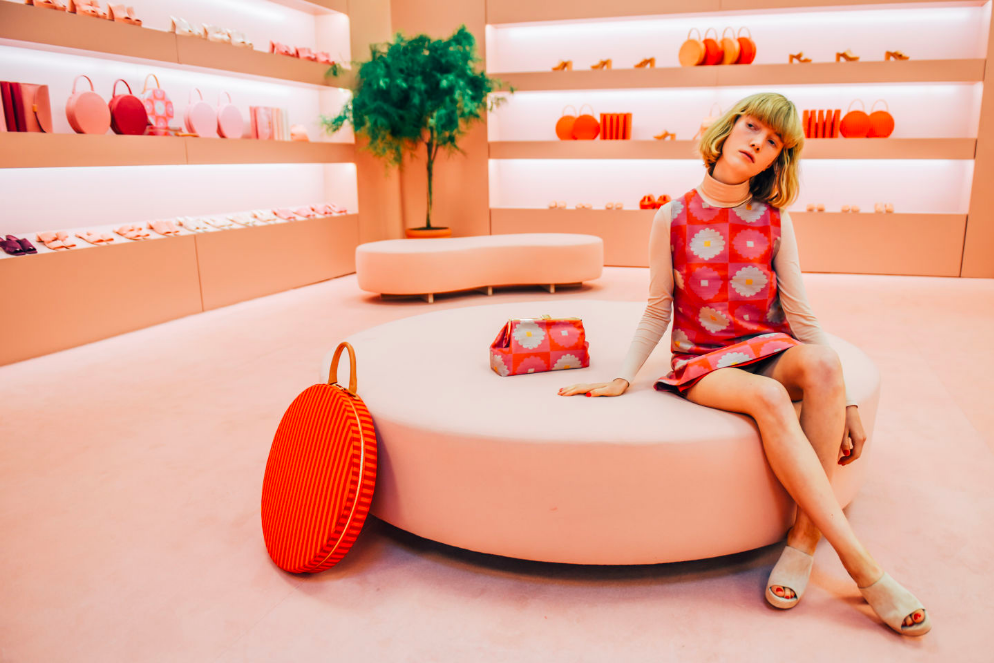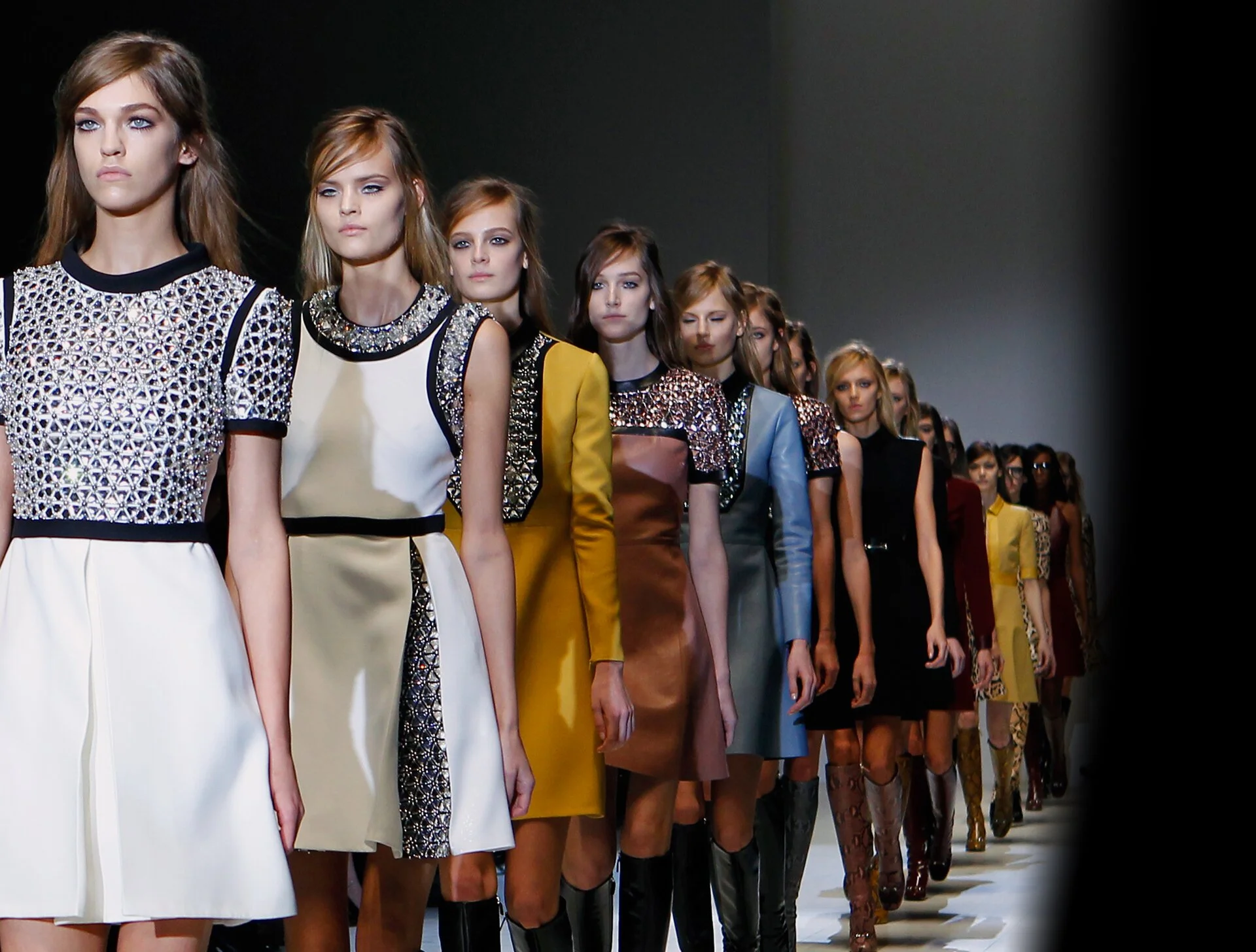Reinventing the Runway
“I’m questioning a lot, I feel a lot of people are questioning. We have a lot of conversation about it: Where is it [the fashion industry] going? It’s not only the clothes…it’s everything”lamented Raf Simons before the unveiling of his final collection for Dior this past October. (Women’s Wear Daily).
Simons is not alone in these sentiments. The increasingly overwhelming and impersonal scope of the fashion world has affected designers, buyers and editors alike, with many commenting on the industry’s alienating growth. Following Simons’departure from Dior, Suzy Menkes, a fashion journalist for Vogue UK published the article “Why Fashion is Crashing,”highlighting the various institutional, corporate and creative demands placed on designers. The Guardian similarly posted an article in light of creative director Alber Elbaz’s dismissal from French fashion house, Lanvin, that addressed concerns about the sustainability of the industry’s current business model (for most large brands, creative directors are expected to create up to six collections a year and expected to juggle both creative and managerial responsibilities).
It’s apparent that the world of fashion is changing. The rise of social media, celebrity endorsements, fast fashion and the commercialization of Fashion Week are provoking major structural shifts within the industry. Campaigns and magazine covers are now revealed over Instagram weeks before their release in print and coverage of flashy runway shows and the front row has stolen the spotlight from the actual clothes. Trends have cluttered 21st century fashion, but a definitive style has yet to emerge and define our decade in the same way the 1970s was evocative of revolutionary spirit, or the flapper movement of the 1920s catalyzed new conceptions of sexuality. Within this turmoil to which Simons refers to, there appears to be a growing divide between the designers who are willing to compete in the industry’s changing environment and those who seek to define their brands against this emerging fashion industrial complex. Creativity and ingenuity is abundant on both fronts, but designers diverge socially and economically with regard to how they chose to unveil their new collections.
Photographers capturing and contributing to Fashion Week madness; image via
Gone are the private showrooms of the past, where elite customers were once invited to a designer’s salon to view the latest collections. Now, although runway shows remain invite only, Fashion Week can be live-streamed from your couch and some collections are ready to order online within weeks of their reveal. However, with the success of a brand increasingly dependent on their number of YouTube views or retweets, the fashion world has become subject to our generation’s notoriously short attention span. In order to gain exposure, designers have to constantly reinvent the wheel–the trademark runway show of old doesn’t yield the same impact when compared alongside today’s more elaborate presentations (Louis Vuitton carousels and Chanel supermarkets in lieu of the standard catwalk come to mind).
Flashy, atypical approaches to runway presentations have proliferated Fashion Week in recent years, with clothes now sharing the spotlight with the pomp and circumstance of these big reveals. According to the website Vogue Runway, the most viewed shows from this past Spring/Summer 2016 ready-to-wear season drew millions of online readers, with Chanel coming in at number one with 4,265,576 views (Vogue Runway). For Givenchy it was a runway constructed of shipping palettes and containerships on the New York City piers; for Chanel, a to-scale airport was installed in Paris’Grand Palais. A fashion house becoming synonymous with the celebrity and press that these presentations attract also helps the brand appeal to the mainstream.
The Grand Palais' elaborate Chanel themed airport; image via
Although historically significant arbiters of taste and style, the recent embrace and incorporation of pop and youth culture, social media and celebrity impact into the runway shows of older labels like Moschino or Balmain have helped propel these brands into fashion’s everyday vocabulary. A perfect embodiment of the intersection between media, celebrity and fashion was encapsulated in Marc Jacob’s electrifying presentation this past ready-to-wear season: models took a turn on an actual red carpet before hitting the runway.
Model Natalie Westling poses on the Marc Jacobs red carpet before strutting down the runway; image via
On the opposite end of the spectrum are those designers who eschew the world of runway show extravaganzas altogether. Choosing to showcase their collections via showrooms (albeit less exclusive than those of the past), performances or parties, these alternatives to the runway are more accessible to designers and their guests. Financially speaking, these approaches cost considerably less than constructing massive sets or relocating shows to different cities each season. These more democratic approaches to fashion also allow industry workers–magazine editors, department store buyers, fashion journalists andbloggers–to interact with designers and their brands on a more immediate and authentic level.
Emerging design label, Mansur Gavriel revealed its first fashion week presentation in the traditional showroom platform. The show’s casual setting allowed guests to linger, appreciate and digest the collection without having to worry about snapping photos of each consecutive look before a model stomped out of view. Alternatively, London based designer Molly Goddard showcased her Fall/Winter 2015 ready-to-wear collection by throwing a party. Close friends of the designer wore pieces from the collection and took turns drawing a live model, allowing guests to view the clothes in action and experience Goddard’s unique aesthetic vision. Clearly, creativity is by no means stifled by the smaller scale and slower pace of these alternative approaches, and the intimacy of these events allow designers to provide their audiences with a more authentic experience and understanding of their brand.
A pastel infused portrait from the Mansur Gavriel showroom; image via
Although a runway show slot during fashion week is still considered the hallmark of success for emerging designers and the competition generated by designers trying to redefine the runway creates a pressure cooker for creativity, perhaps a return to fashion’s roots is a much needed change of scenery. After all, at what point does the show itself distract from the clothes on display, and at what cost? A shift toward the showrooms or collection reveals parties of old does not necessarily imply a return to fashion’s more elitist past. Rather, it offers designers the opportunity to explore new creative outlets and allows editors, buyers and consumers to experience high fashion on a tangible, personal and more interactive level.
Featured image via










